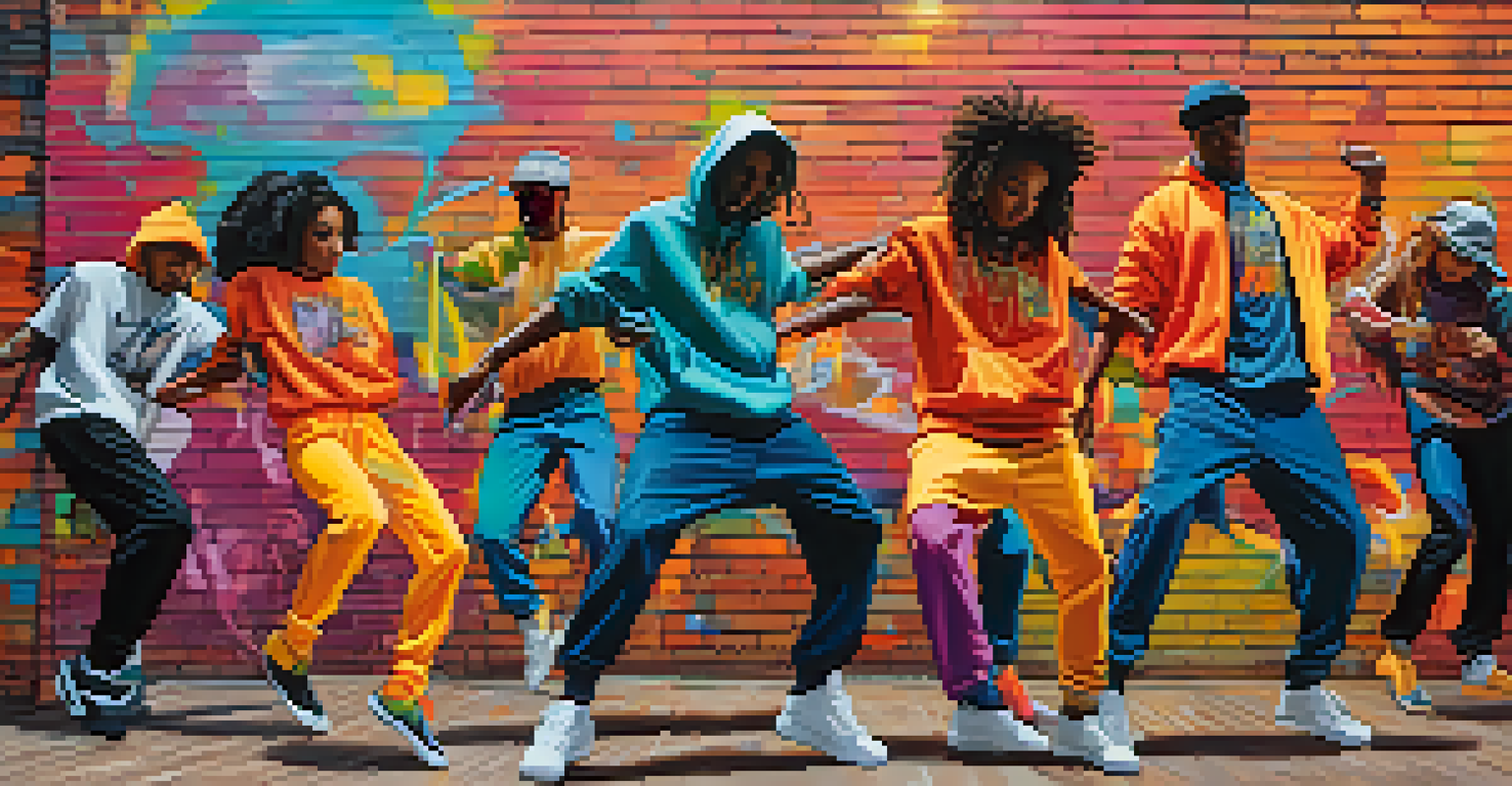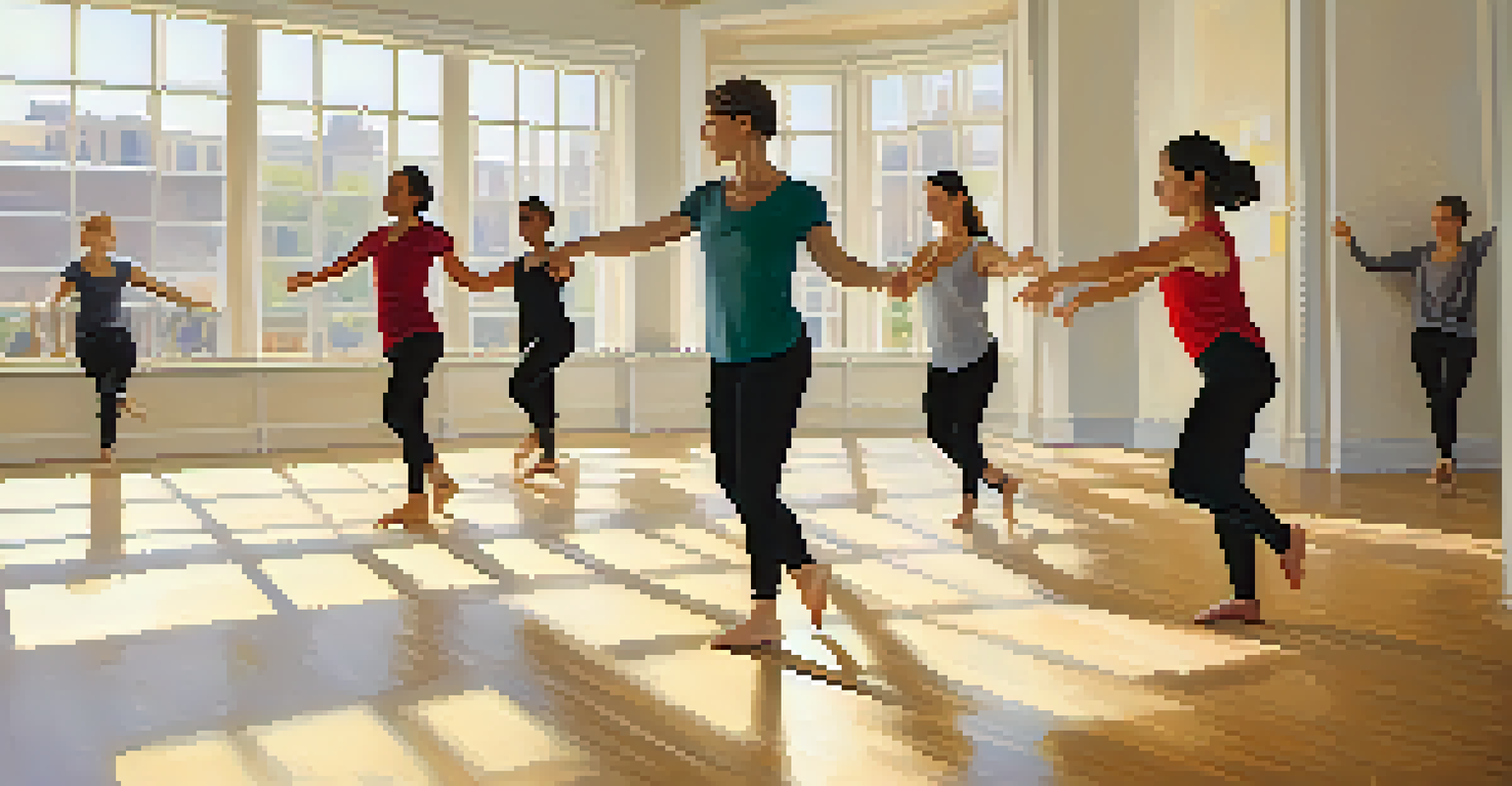Dance Styles and Their Impact on Non-Verbal Communication

The Role of Dance in Expressing Emotions
Dance is a powerful medium for expressing emotions without words. Each movement carries a set of feelings that can resonate with audiences on a deeper level. For example, a ballet dancer’s graceful pirouette can convey joy, while a contemporary dancer’s sharp, jagged movements might express turmoil or frustration.
Dance is the hidden language of the soul.
This ability to express emotions non-verbally can bridge gaps in communication, allowing people from different backgrounds to connect through shared feelings. In many ways, dance serves as a universal language, transcending the barriers of spoken words. Just like a smile can brighten someone's day, a dance can evoke laughter, sadness, or nostalgia.
Moreover, the energy and passion behind the movements can enhance the emotional impact. Dancers often draw from personal experiences, making each performance unique and relatable. This emotional connection fosters a sense of empathy and understanding in the audience, showcasing the profound impact dance has on non-verbal communication.
Cultural Influences on Dance and Communication
Different dance styles reflect the cultural backgrounds from which they originate, influencing how emotions and ideas are communicated. For instance, traditional African dance often involves communal participation, emphasizing unity and collective expression. In contrast, ballet can appear more individualistic, highlighting personal achievement and grace.

These cultural nuances shape how audiences interpret movements and gestures. A simple twirl in one culture might signify celebration, while in another, it could represent longing or sadness. Understanding these differences is crucial, especially in a multicultural world where dance can serve as a bridge between diverse communities.
Dance as a Universal Language
Dance transcends verbal communication, allowing people from diverse backgrounds to connect through shared emotions and experiences.
As we learn about various dance styles, we also gain insights into the values and beliefs of different cultures. The stories told through dance offer a glimpse into traditions, histories, and ways of life, enhancing our appreciation for non-verbal communication as a whole.
How Dance Enhances Team Communication
Dance is not just an individual expression; it can also foster teamwork and collaboration. In group dances, such as salsa or hip-hop, dancers must synchronize their movements, relying on non-verbal cues to communicate effectively. This reliance on body language cultivates trust and understanding among team members.
Dance is the joy of movement and the heart of life.
For example, in a partner dance, one dancer's subtle shift in weight can signal a change in direction, requiring both partners to be attuned to each other’s movements. Such interactions mirror effective communication in other team settings, where understanding and responding to non-verbal signals is key.
Ultimately, the practice of dancing together can enhance bonding and cohesion within a group. The shared experience of learning and performing can lead to stronger relationships, making dance an effective tool for building connections and improving communication skills.
The Science Behind Dance and Non-Verbal Signals
Research shows that dance can stimulate areas of the brain associated with social cognition, enhancing our ability to interpret non-verbal signals. When we watch dancers, our brain processes their movements, allowing us to perceive emotions and intentions without any spoken words. This phenomenon is often referred to as 'embodied cognition.'
For instance, studies have found that people can accurately identify emotions through dance movements alone, demonstrating how powerful non-verbal communication can be. This ability to read and respond to body language is essential not only in dance but also in everyday interactions.
Cultural Influences Shape Expression
Different dance styles reflect cultural backgrounds, influencing how emotions are conveyed and interpreted across communities.
Moreover, engaging in dance can heighten our awareness of our own body language. As dancers learn to express themselves physically, they become more conscious of how their movements affect others. This heightened sensitivity can translate into better communication skills in various aspects of life.
Dance as a Tool for Social Change
Dance has often been used as a vehicle for social change, conveying messages that resonate deeply with audiences. From protest dances to community performances, the movements can express dissent or solidarity, often without uttering a single word. This non-verbal form of communication can be incredibly powerful in raising awareness about social issues.
For example, the dance styles that emerged during the civil rights movement not only entertained but also served as a form of resistance and empowerment. The rhythms and movements became a way for marginalized voices to be heard, illustrating how dance can amplify important messages.
In today's world, choreographers and dancers continue to use their art to address pressing social concerns, fostering dialogue and encouraging empathy. By communicating complex ideas through dance, they invite audiences to engage with issues in a visceral way, making non-verbal communication a catalyst for change.
The Therapeutic Benefits of Dance Communication
Dance therapy has gained recognition as an effective way to enhance non-verbal communication, particularly for individuals who may struggle to express themselves verbally. Through movement, participants can explore and articulate feelings that they might find difficult to convey with words. This form of communication can be especially beneficial for children or those facing emotional challenges.
In a therapeutic setting, dance allows individuals to release pent-up emotions and gain deeper insights into their feelings. For example, someone dealing with anxiety might find solace in rhythmic movements, using dance as an outlet for stress and tension. The process of movement can create a safe space for exploration and self-expression.
Dance Fosters Team Communication
Engaging in group dances enhances teamwork and collaboration by promoting trust and non-verbal communication among participants.
Furthermore, participating in dance therapy encourages a sense of community and connection. As individuals share their experiences through movement, they often find that they are not alone in their struggles. This shared non-verbal communication fosters support and understanding, highlighting the healing power of dance.
The Future of Dance and Non-Verbal Communication
As society continues to evolve, so too does the role of dance in non-verbal communication. With the rise of digital platforms, we see an increasing number of virtual dance communities where people connect through shared movements, regardless of geographical boundaries. This digital age is reshaping how we communicate and share experiences through dance.
Moreover, the fusion of different dance styles has led to innovative forms of expression, allowing dancers to communicate complex emotions and ideas in new ways. The blending of cultures and techniques can create entirely new narratives, expanding the possibilities of non-verbal communication.

Looking ahead, the integration of technology in dance, such as augmented reality and interactive performances, promises to further transform how we perceive and engage with non-verbal signals. As dance continues to adapt and grow, its impact on communication will remain a vital aspect of human connection.